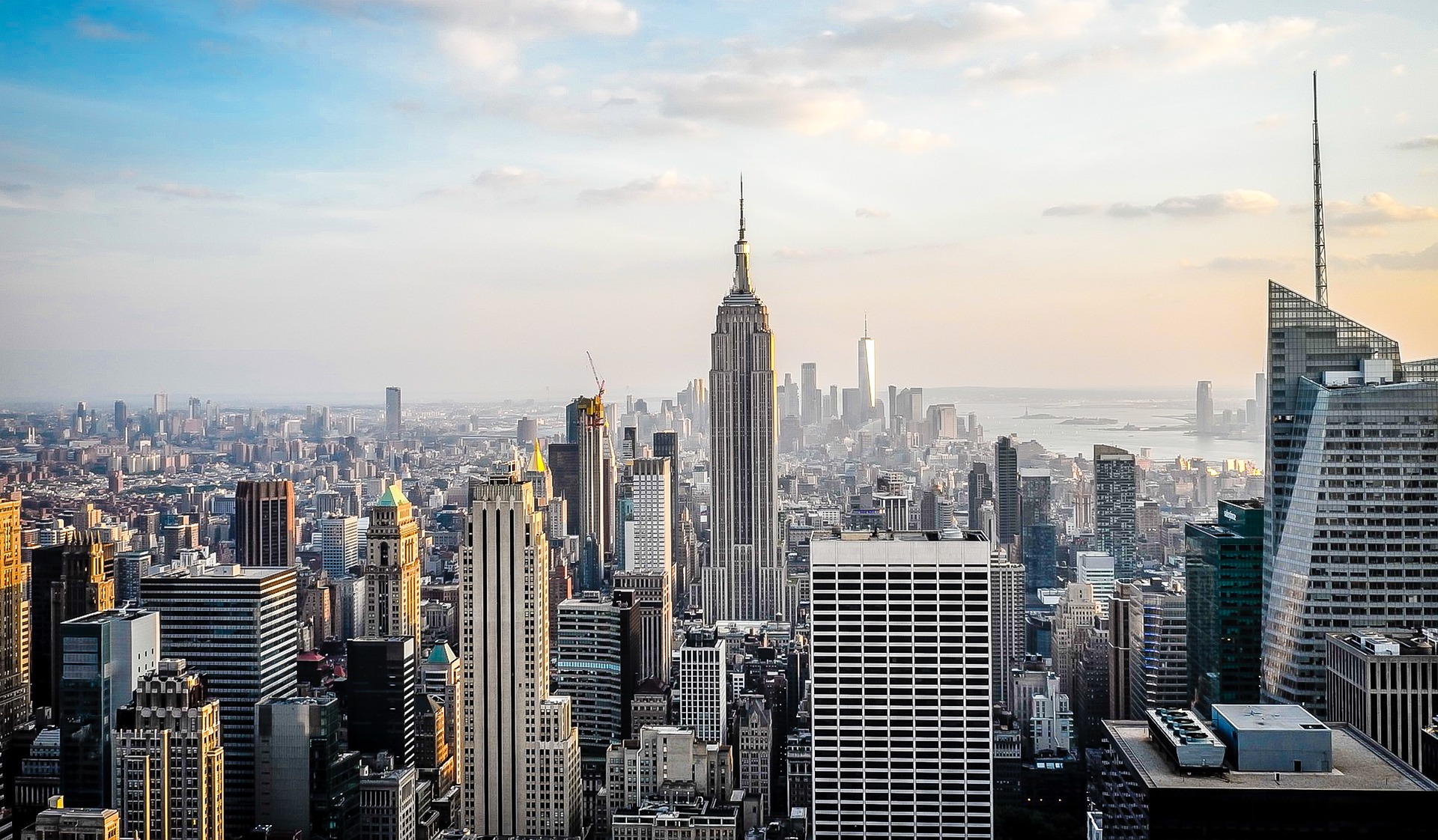President Biden has reinstated America’s commitment to the landmark accord in no uncertain terms as the lynchpin of his climate protection strategy.

Labeling the climate crisis as an existential threat to the world and a matter of national security for the U.S., Biden gathered 40 world leaders for a virtual summit on April 26, where he promised to cut America’s emissions by half by 2030. Among the attendees were the 17 nations responsible for four-fifths of the global greenhouse gas emissions. The aim is to re-establish America as the worldwide leader in green investments.
Despite the absence of an Egyptian delegation, the government of President Abdel Fatah el-Sisi attended U.S. Climate Envoy John Kerry’s summit with leaders from the Middle East on April 3 in Abu Dhabi, committing to accelerate climate action in the region in line with the Paris protocols.
As one of the countries most adversely affected by climate change, Egypt has made a concerted push to implement a lasting and sustainable climate protection framework. Such initiatives range from mega infrastructure projects like Aswan’s Benban solar park to pledging total commitment to the U.N.’s Sustainable Development Goals and initiatives to improve air quality, recycling, waste management agricultural practices and electric vehicle adoption.
As the summit’s organizer, Biden outlined the purpose of the virtual conference was to “discuss where the world goes from here on climate change and what each country must do to limit Earth’s warming to no more than 1.5 degrees Celsius compared with pre-industrial levels.” He added that that is the “threshold beyond which scientists predict irreversible environmental damage,” noted an article by the New York Times editorial board in March.
Kerry has said in February to the media that America would “earn its way back” to legitimacy in the Paris process and broader global climate initiative, and Egypt and the world are observing as Biden radically overhauls the climate policy of his predecessor. For country leaders, the Paris accords are the cornerstone of his multilateral environmental agenda.

Existential threat
Nearly every country is a signatory to the Paris Agreement to reduce carbon emissions. In December 2015, then U.S. President Barak Obama signed the deal via executive order. “We need a strong global agreement to accomplish that goal [environmental protection],” wrote the President at the time in an official statement. “An enduring agreement that reduces global carbon pollution and sets the world on a course to a low-carbon future.” However, by June 2017, President Donald Trump announced the country would exit the accord as it would “undermine” the U.S. economy and put it “at a permanent disadvantage.” Biden, who was Obama’s vice president, returned to the agreement in January.
His $2 trillion climate action is predicated on clean energy and sustainable infrastructure and constitutes half of his Build Back Better plan. Biden’s climate initiative puts the United States on “an irreversible path” to net-zero carbon emissions by 2050. His strategy aims to achieve a carbon pollution-free power sector by 2035, according to Alana Wise on NPR in July.
With a slim Democratic majority in the Senate, Biden could achieve critical parts of his ambitious plan. “During his first few months in office, Biden signed a wave of executive orders to address climate change, including conserving 30% of America’s land and waters by 2030, protecting the Arctic National Wildlife Refuge from drilling, and restoring and elevating the role of science in government decisions,” wrote Emma Newberger for CNBC’s website in January.
Some legal actions on climate will take longer, “including the administration’s plan to reverse a slew of Trump’s environmental rollbacks on rules governing clean air and water and planet-warming emissions. The Trump administration reversed more than 100 environmental rules in four years, according to research from Columbia Law School,” Newberger said.
Mitchell Bernard, president of the Natural Resources Defense Council, said Biden’s order to rejoin the accord makes the United States part of the global solution for climate change rather than part of the problem. “This is swift and decisive action. It sets the stage for the comprehensive action we need to confront the climate crisis now, while there’s still time to act,” he said in a January CNBC website article.

Kyoto 2.0
With the next major U.N. climate summit slated for November in Scotland, countries in attendance will report their updated emissions targets for this decade.
The primary goal of the Paris Agreement is to keep the global temperature rise well below 2 degrees Celsius (3.6 degrees Fahrenheit) compared with pre-industrial levels. The Earth is on pace to warm by 1.5 degrees Celsius over the next two decades, according to various international organizations.
The other main goals are to increase the ability to adapt to adverse impacts of climate change, lower greenhouse gas emissions in a manner that does not threaten food production, and make finance flows consistent with these goals.
The 1997 Kyoto Protocol, the predecessor to the Paris Agreement, codified objectives for climate control with quantitative targets only for “Annex I” developed countries.
Robert Stavins, a professor of energy and economic development at Harvard’s Kennedy School, like many experts, argued the Kyoto Protocol was “highly flawed,” because significant growth in emissions was coming from emerging economies. “Because the protocol excluded most countries (in particular, developing countries with relatively low costs of emissions mitigation), the costs were vastly greater than need be,” he said. “Four times the cost-effective level by conservative estimates. Also, some saw that it wasn’t inclusive.”
As a result, the United States never ratified Kyoto, and it faded into obscurity as other vital nations reneged on its commitments.
By contrast, the Paris Agreement has a “hybrid structure, combining top-down … and bottom-up elements,” according to Stavins. The former is largely procedural, including a requirement in Article 4. Countries submit nationally determined contributions (NDCs), statements of their emissions reductions from 2020 to 2025/2030 and update them by the end of 2020 and every five years after that, he explained. The key bottom-up element “consists of the set of submitted NDCs, which are not part of the agreement but, rather, are assembled in a separate public registry. The notion is that the NDCs — unlike the negotiated Kyoto targets — arise from or are at least consistent with domestic policies, goals, and politics in their respective countries.”
That essentially means America’s NDC, due to its withdrawal in 2017, will need to be at least as ambitious as (and probably more than) the Obama administration target of a 26-28% reduction in greenhouse gas emissions by 2025. It will need to compare favorably with the targets now being announced by other major emitters. In a March report for NBC News, Josh Lederman said, “the number to watch for maybe 50%.”
“But if significant ambition is one necessary condition for the new Biden NDC, the other necessary condition is that it be credible, that is, truly achievable given existing and reasonably anticipated policy actions,” Stavins asserted.
Binding force?
Trump broadly eased environmental regulations during his tenure. The professed rationale for exiting the Paris Agreement was that developing nations, namely China (and, to a lesser extent, India), would have an unfair advantage vis-à-vis American commitments.
China is the world’s largest polluter but has pledged to work toward net-zero emissions by 2060, surprising many in the international community.
“Much of the industrialized world is eagerly awaiting regular updates on compliance from the second-largest economy in the world. China released the equivalent of 10 billion tons of carbon dioxide into the atmosphere in 2018, according to the Global Carbon Project, which tracks emissions worldwide. That was almost twice as much as the second-largest emitter, the United States, and three times as much as the European Union,” wrote Rachel Koning Beals for MarketWatch in April.
It remains to be seen whether Trump’s rationale will be vindicated, should China and other vital industrializing nations fail to pull their weight regarding the stipulations of the Paris Agreement. Most observers so far remain buoyant on the prospects of meeting these ambitious targets. Ascertaining and ensuring the integrity and validity of each nation’s reporting on their emissions targets constitutes another significant challenge entirely.
“A vigorous influence campaign is underway over the president’s forthcoming commitment to the Paris Agreement, with all eyes on whether he will pledge to cut greenhouse gas emissions by more or less than 50 percent by decade’s end,” Lederman wrote. Meanwhile, environmental groups, elected officials and scientists are backing this lofty target, “a goal the nation is nowhere near on track to meet,” and seen as “unrealistic” by many in the business community.
Perhaps the fate of the Paris Agreement hinges, like the Kyoto experience, to some extent on the relative “bindingness” of critical targets. Stavins argues that Paris Agreement “comes not from the agreement itself, but from any domestic laws and regulations put in place to achieve [each nation’s] NDCs.” That is one of the defining features that makes it a more workable, enforceable, and viable proposition than Kyoto.
Encouragingly “Biden has made it clear: None of the other issues we have with China — and there are issues — is held hostage to, or is engaged in, a trade for what we need to do on climate,” pledged Kerry in an April story by Reuters.
Still, the former U.S. secretary of state told NBC last month he also wants to see the Paris accord shoot for more aggressive objectives. “It has to be stronger,” he said, stressing that the multinational deal is the first step in a long-term strategy. “I’m confident we can get there. The issue is, are we going to get there in time? And that’s our race. This is our moonshot.”







